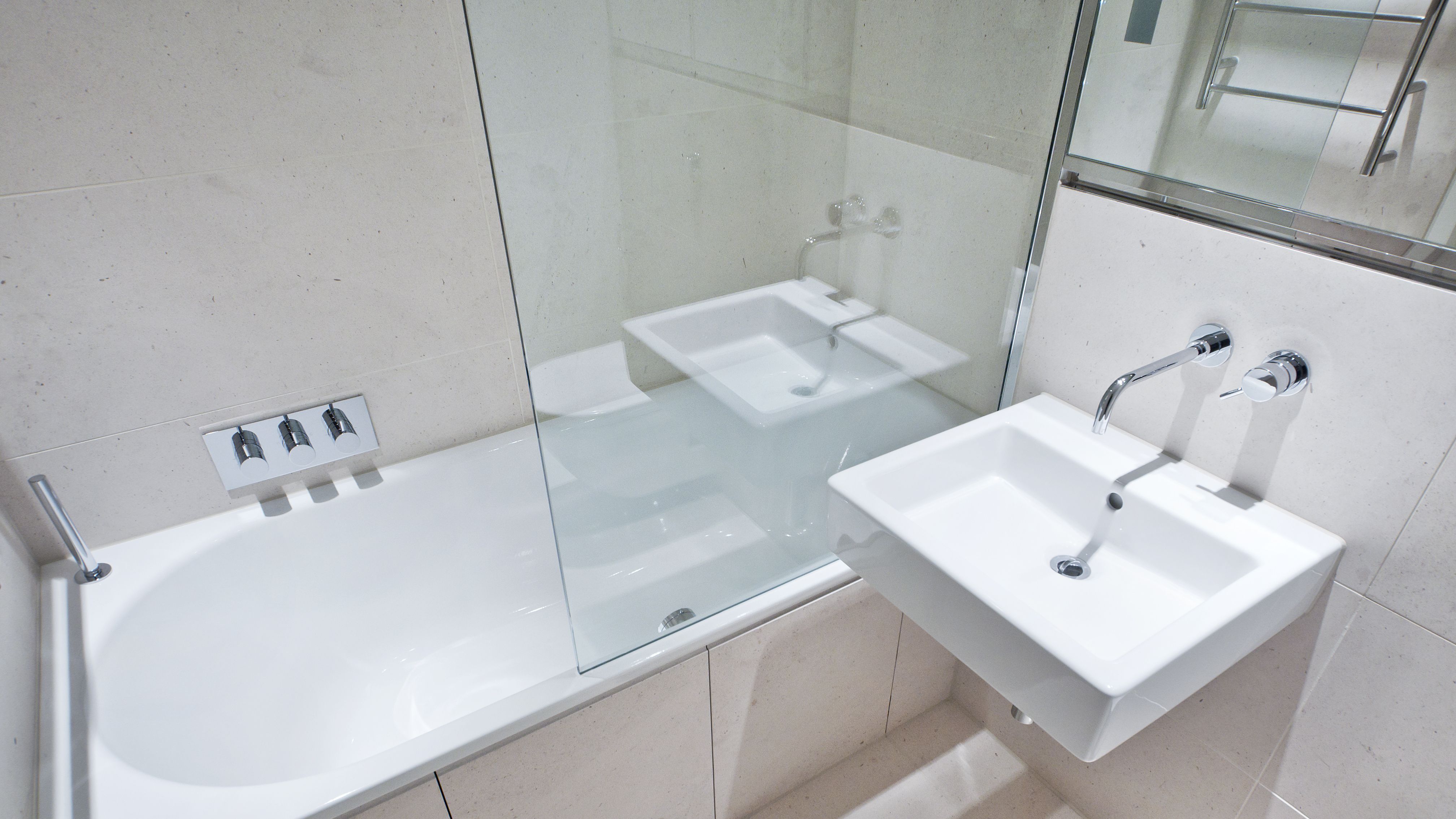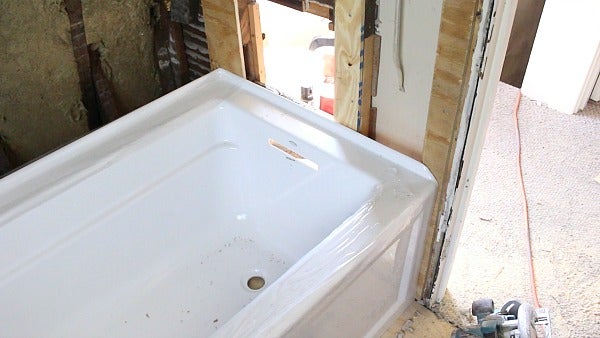Mastering Basic Plumbing for Installing a Bathtub
Mastering Basic Plumbing for Installing a Bathtub
Blog Article
This post listed below about A Step-by-Step Guide to Installing a Bathtub is rather captivating. Try it and draw your own results.

Setting up a tub isn't exactly rocket science, however it does need strong plumbing, woodworking, and often, tiling abilities. Changing an old bath tub with a brand-new one is also a moderately challenging project. If the old tub is readily easily accessible, the task can relocate quickly; if you have to open a wall surface to eliminate the old bathtub as well as position the new tub, the job is a lot harder. In either case, the project is within a house handyman's abilities, although you will certainly require an assistant to leave the old tub and embeded in the new one. Ensure you have actually certified yourself for the work and fit attempting it. Rather than working with a specialist to take over a halfway-completed project, it is far better to think about employing one prior to you begin. Chances are you might need a professional plumber to make tube links.
This short article will certainly help you set up a brand-new bath tub in your restroom if you have actually currently purchased a brand-new bathtub as well as do not need to alter the setup of your previous supply of water pipelines.
Your devices as well as product list should make up the following:
Removing Old Touches
If you need to change old taps with new ones as a part of your setup, then the first thing you must do is detach the supply of water. After doing so, turn on the faucets to drain pipes any kind of water staying in the system. The process of getting rid of the existing faucets can be fairly bothersome due to the restricted accessibility that is typically the situation.
Use a container wrench (crowsfoot spanner) or a faucet tool to undo the nut that connects the supply pipelines to the taps. Have a cloth all set for the staying water that will originate from the pipelines. When the supply pipes have actually been removed, make use of the exact same device to loosen up the nut that holds the taps onto the bath/basin. You will certainly require to stop the single faucets from turning throughout this procedure. When the faucets have been eliminated, the holes in the bath/basin will certainly have to be cleansed of any old sealing substance.
Before carrying on to fit the new faucets, contrast the pipe connections on the old taps to the new taps. If the old taps are longer than the brand-new faucets, after that a shank adapter is required for the brand-new taps to fit.
Fitting New Taps
If the tails of the new faucets are plastic, after that you will certainly need a plastic connector to prevent damage to the thread. One end of the connector fits on the plastic tail of the tap and the other end offers a connection to the existent supply pipes.
If you need to fit a monobloc, then you will require minimizing couplers, which attaches the 10mm pipeline of the monobloc to the conventional 15mm supply pipe.
Next, position the tap in the mounting hole in the bath/basin guaranteeing that the washers remain in area in between the tap and the sink. Safeguard the faucet in place with the supplier supplied backnut. When the tap is securely in position, the supply pipes can be connected to the tails of the faucets. The taps can either be attached by using corrugated copper piping or with normal faucet connectors. The previous type should be linked to the tap finishes initially, tightening just by hand. The supply pipes can later on be connected to the various other end. Tighten both ends with a spanner after both ends have actually been connected.
Mounting the Bathtub
Utilizing both wooden boards under its feet, put the tub in the needed placement. The wooden boards are practical in uniformly spreading out the weight of the bath tub over the area of the boards as opposed to concentrating all the weight onto four small points.
The following objective is to ensure that the bathtub is leveled all round. This can be attained by checking the spirit level as well as changing the feet on the tub up until the level checks out degree.
To set up faucets, fit all-time low of the furthest adaptable faucet adapter to the ideal supply pipeline by making a compression sign up with; then do the same for the other faucet.
Activate the water system and also inspect all joints and new pipework for leakages and tighten them if required. Load the bathtub and additionally examine the overflow outlet as well as the typical electrical outlet for leakages.
Finally, repair the bath paneling as explained in the producer's instruction manual. Tiling as well as securing around the tub ought to wait until the bath tub has actually been utilized at the very least when as this will certainly settle it right into its final position.
Preparing for the Setup
Firstly, the sustaining framework provided with the bath must be fitted (if required) according to the producer's instructions. Next, fit the faucets or mixer to the bath tub. When fitting the tap block, it is necessary to ensure that if the faucet features a plastic washing machine, it is fitted between the bath and the faucets. On a plastic bath, it is also sensible to fit a supporting plate under the taps system to avoid stress on the tub.
Fit the flexible tap connectors to the bottom of the two faucets making use of 2 nuts and also olives (often supplied with the tub). Fit the plug-hole outlet by smearing mastic filler round the sink electrical outlet hole, and then pass the outlet via the hole in the bathroom. Make use of the nut supplied by the maker to fit the plug-hole. Check out the plug-hole outlet for an inlet on the side for the overflow pipe.
Next off, fit completion of the flexible overflow pipe to the overflow outlet. After that, screw the pipeline to the overflow face which should be fitted inside the bath. Make sure you use all of the supplied washers.
Connect the trap to the bottom of the waste outlet on the bathtub by winding the string of the waste outlet with silicone mastic or PTFE tape, and also screw on the catch to the electrical outlet. Link the bottom of the overflow tube in a similar manner.The bath should currently be ready to be fitted in its final placement.
Tiling Around the Bath tub
In the area where the bath fulfills the ceramic tile, it is needed to seal the accompanies a silicone rubber caulking. This is necessary as the fitting can relocate enough to crack a rigid seal, causing the water to permeate the wall surface in between the bath and also the tiling, causing issues with wetness and also feasible leakages to the ceiling listed below.
You can pick from a range of coloured sealers to assimilate your components as well as fittings. They are sold in tubes and also cartridges, and also can sealing voids approximately a size of 3mm (1/8 inch). If you have a larger gap to fill, you can fill it with spins of drenched newspaper or soft rope. Remember to always load the bath tub with water before sealing, to permit the activity experienced when the tub is in use. The sealant can split rather very early if you do not take into account this movement before securing.
Alternatively, ceramic coving or quadrant floor tiles can be used to edge the bathroom or shower tray. Plastic strips of coving, which are easy to use and also reduce to dimension, are likewise easily available on the marketplace. It is advisable to fit the floor tiles utilizing water-resistant or waterproof glue as well as cement.
Bathtub Installation
How Important Is A Bathtub To Your Home?
High-quality baths, showers, and other bathroom updates are necessary when considering a smart investment in your home. It’s a room that you go to every day and one that is constantly being used by guests.The bathroom is one of the top trafficked rooms in a home and also one of the most valuable in terms of home resale.
Install Piping Before Tub
You will be using your existing drain and waste vent system, but pipes required include the hot and cold water supply lines and a pipe leading to a shower head. A mixing valve and shower head are also needed. Air chambers may be required.
Position the Tub
Lower the tub into place so that the continuous flange fits against the wall studs and rests on 1’x4' or 2’x4' supports. Anchor the tub to the enclosure with nails or screws inserted through the flanges into the studs.
NOTE: Remember, bathtubs and shower stalls may require support framing. A bathtub filled with water is extremely heavy, so check building codes and framing support before installing the tub.
Assemble Drain Connections
Assemble the bathtub drain connections by connecting the tub overflow with the tub drain above the trap, not beyond it. The trap will have a compression fitting that screws over the arm of the overflow assembly.
Place a Pipe For the Shower Head
First, locate a brass female threaded winged fitting and attach it to a framing support via a screw or a nail. Then run a pipe up the wall for the shower head. Sweat or solder the other side of the brass fitting to the top of the pipe.
Attaching Hot and Cold Water Lines
Attach your water lines for both hot and cold by sweating these directly into the hot and cold ports of the mixing valve. The mixing valve will be how water enters the tub’s system, not by the pipes themselves.
Install the Spout
Extend a piece of 1/2 inch pipe, or whichever length is specified in the manufacturer’s instructions, for the tub spout. Sweat on a male threaded fitting at the end of the pipe or use a brass nipple of the proper length and a 1/2 inch cap.
NOTE: At this point you should have your rough-in plumbing work inspected before proceeding further.
Check For Leaks
Restore the water pressure and check the drain connection and the supply pipes for any sign of leaking.
estore the Bathroom Wall
Replace the wall with moisture-resistant drywall as a base for your wall covering. Seal the joints between the wall and your new tub with silicone caulk as protection against water seepage.
https://www.berkeys.com/2016/12/02/bathtub-installation-dallas/

I have been very intrigued by A Step-by-Step Guide to Installing a Bathtub and I really hope you appreciated my piece. Enjoyed reading our entry? Please share it. Let others discover it. Bless you for your time. Visit us again soon.
Ring for results! Report this page